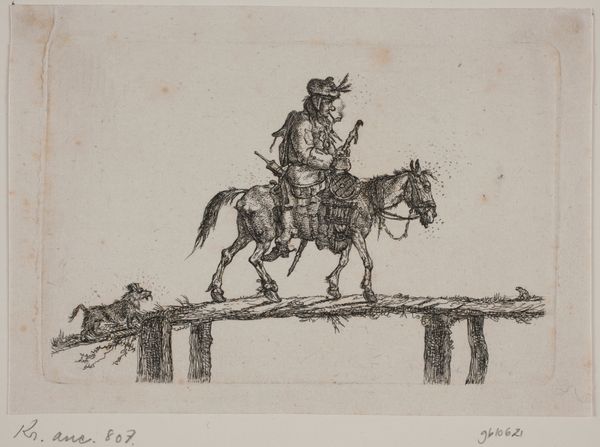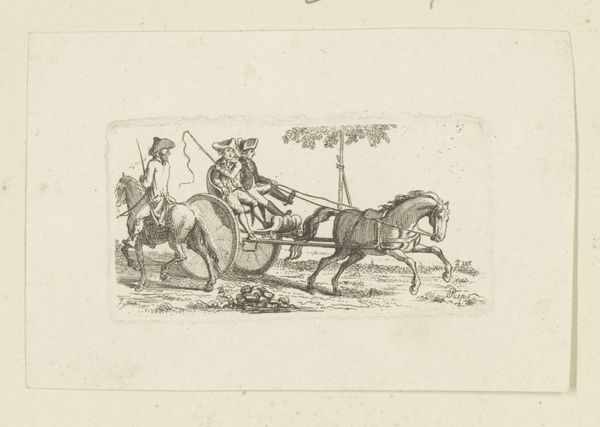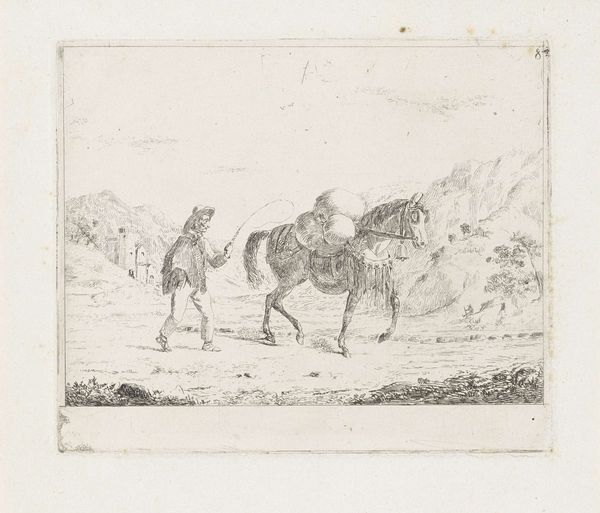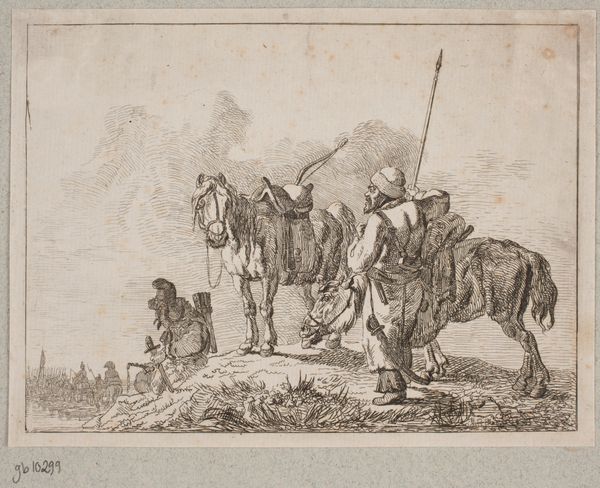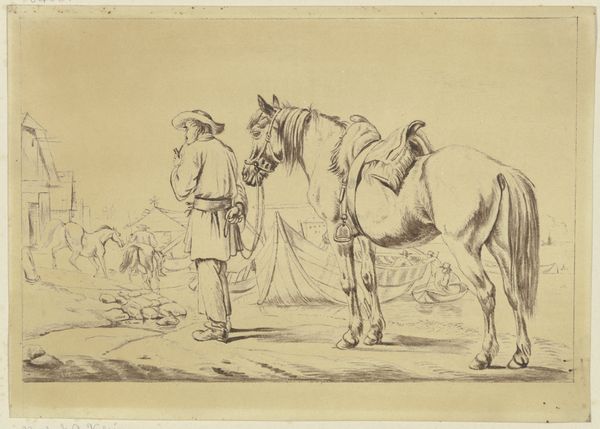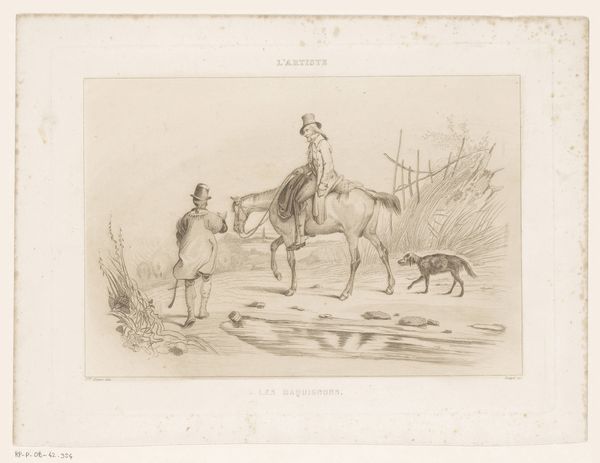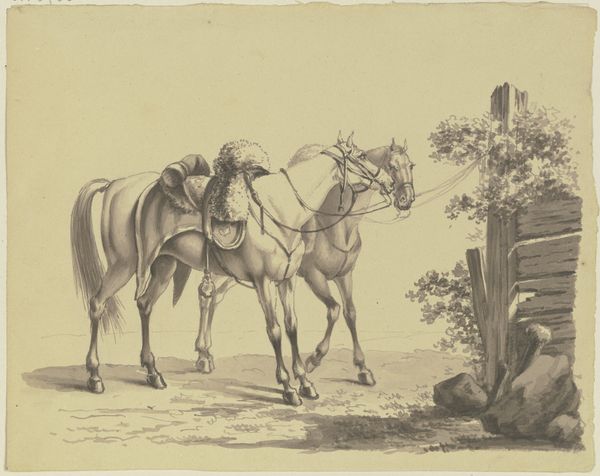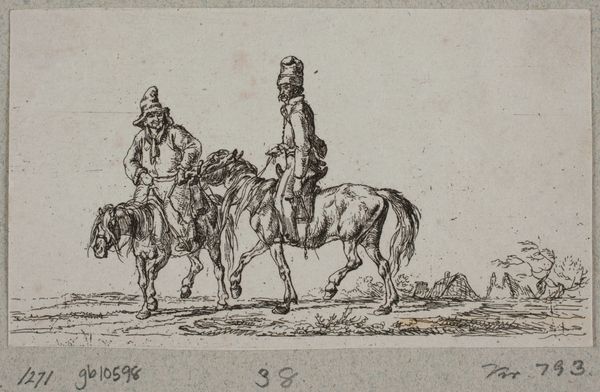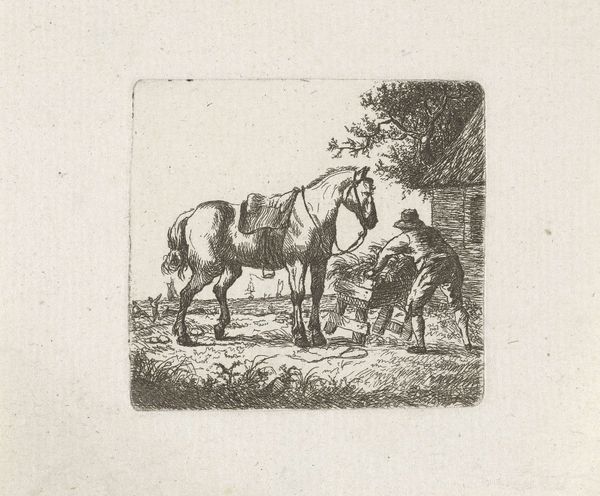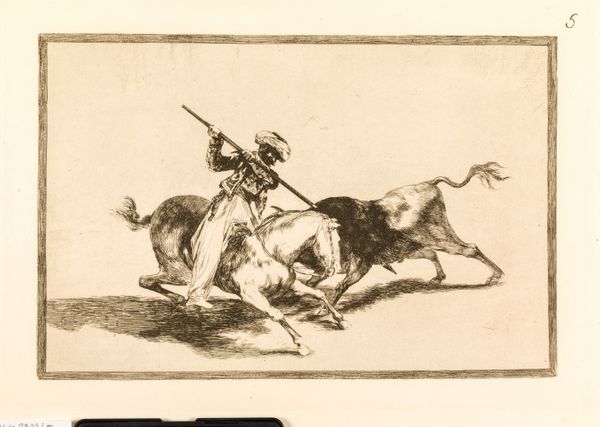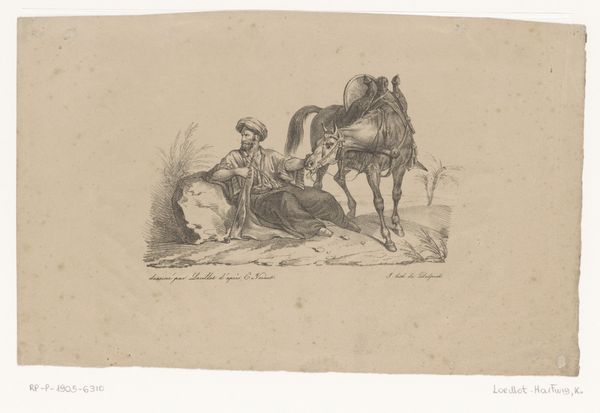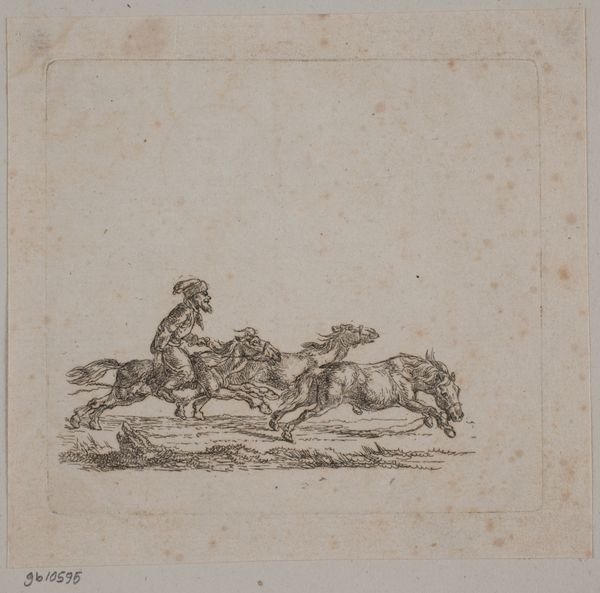
print, engraving
# print
#
landscape
#
figuration
#
romanticism
#
engraving
Dimensions: 45 mm (height) x 54 mm (width) (plademaal)
Editor: Here we have Christian David Gebauer's "En kosak, der stiger til hest," created in 1813. It's a delicate engraving. The first thing that struck me was the way the figures seem so self-contained within this vast landscape. What do you see in this piece? Curator: I am drawn to the economy of line. Note how Gebauer uses simple, yet assertive marks to articulate form and depth. The landscape, rather than overwhelming the figures, serves as a ground against which their forms are expressed. This creates an intriguing tension. The contrast between the density of lines that make up the horses and rider compared to the minimal treatment of the landscape also establishes a focal point, drawing the eye. Do you notice the patterns and directional flow created by the lines? Editor: I do, it’s almost as if the landscape is an afterthought to the foregrounded figures. The way the lines delineate the horse’s musculature contrasts the emptiness of the sky, creating that emphasis you pointed out. Curator: Precisely. It's an investigation into the relationships between mass and space. One might analyze the semiotic significance of the horse, a recurring symbol of power and mobility. Furthermore, the relationship between the horse, rider, and surrounding negative space can be seen as its own system of signs. The lines form this entire structure. Editor: I'm beginning to appreciate how even within what seems a simple scene, there are multiple layers of form and relationships at play, all rendered through the artist's engraving technique. I initially focused on the subject, but I now understand the emphasis on the language of lines. Curator: Yes, and how they are constructed to develop not only mass, but space. Gebauer's study of line guides us into an exploration of visual elements rather than narrative.
Comments
No comments
Be the first to comment and join the conversation on the ultimate creative platform.
